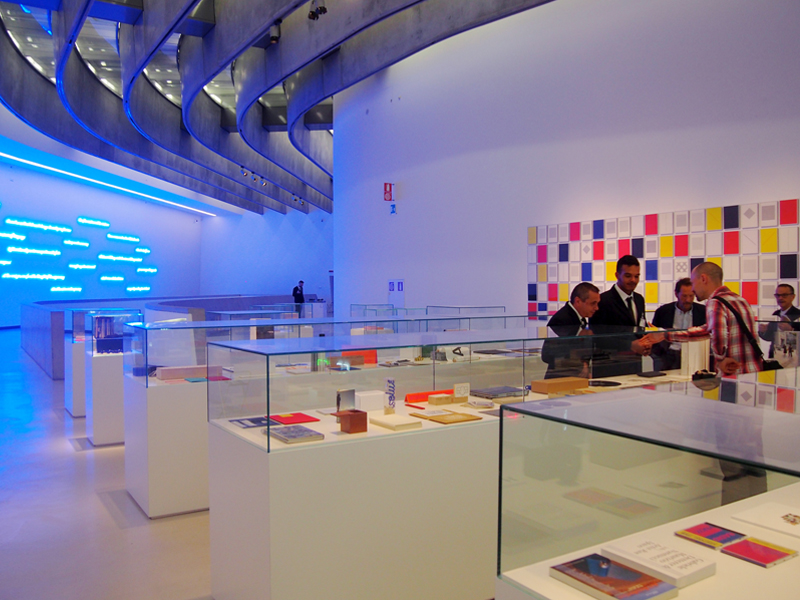
Museum staff and guests discuss items in display cases at the preview of Maurizio Nannucci’s retrospective exhibition, Where to Start From, at the Museo MAXXI, Rome
Does an all-too-familiar and oftentimes banal display convention in contemporary jewelry work better in other art genres? Conceptual artist Maurizio Nannucci utilizes row after row of glass-topped display cases to house four decades of text- and audio-based works mostly in the form of multiples. Over a hundred small-scale pieces (artist books, photos, records, etc., lined up next to one another neither by type or date) are also present in the museum, an interesting contrast to the artist’s large spatial installations for which he is known. Neither Nannucci nor the museum’s curatorial seems to discriminate against small works—putting them amid his much grander pieces tells the viewer that objects of any size, big or small, have the capacity to explore culture and society on the same level. Is jewelry, also a small object, allowed to speak that loudly, too?
Does the glass memorialize different kinds of work in different kinds of ways? Does art under glass act as record whereas jewelry acts as mere artifact? I would say yes, and the amount of space dedicated to certain works can determine whether they are recognized as one, or the other. Although contemporary jewelry today is experiencing very strong institutional support, it does not get offered the same amount of real estate that contemporary art exhibitions do. While artifacts are almost always crowded together, art enjoys plenty of breathing room. Space and context do any type of work a favor, and jewelry shouldn’t be excluded.
Lessons tracks a small roster of AJF contributors as they look, shoot, and reflect on what they see. Our first guest reporter is Kellie Riggs, who finds inspiration in meeting artists, hearing them talk, and, in one instance, discussing the watch of their dreams.




